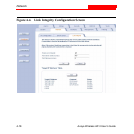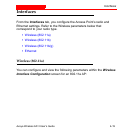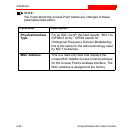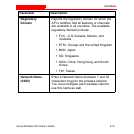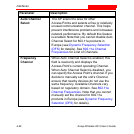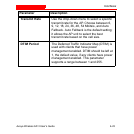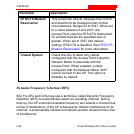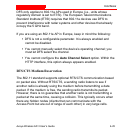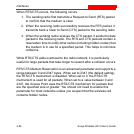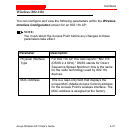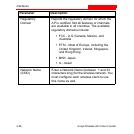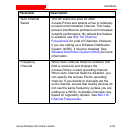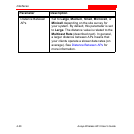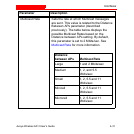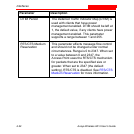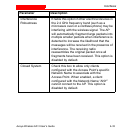
Interfaces
4-26 Avaya Wireless AP-3 User’s Guide
When RTS/CTS occurs, the following occurs.
1. The sending radio first transmits a Request to Send (RTS) packet
to confirm that the medium is clear.
2. When the receiving radio successfully receives the RTS packet, it
transmits back a Clear to Send (CTS) packet to the sending radio.
3. When the sending radio receives the CTS packet, it sends the data
packet to the receiving radio. The RTS and CTS packets contain a
reservation time to notify other radios (including hidden nodes) that
the medium is in use for a specified period. This helps to minimize
collisions.
While RTS/CTS adds overhead to the radio network, it is particularly
useful for large packets that take longer to resend after a collision occurs.
RTS/CTS Medium Reservation is an advanced parameter and supports a
range between 0 and 2347 bytes. When set to 2347 (the default setting),
the RTS/CTS mechanism is disabled. When set to 0, the RTS/CTS
mechanism is used for all packets. When set to a value between 0 and
2347, the Access Point uses the RTS/CTS mechanism for packets that
are the specified size or greater. You should not need to enable this
parameter for most networks unless you suspect that the wireless cell
contains hidden nodes.



